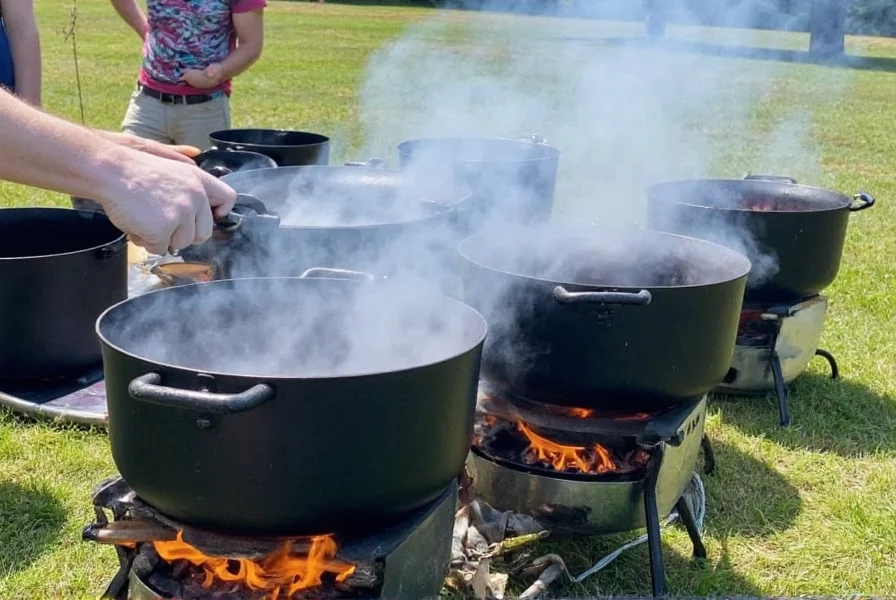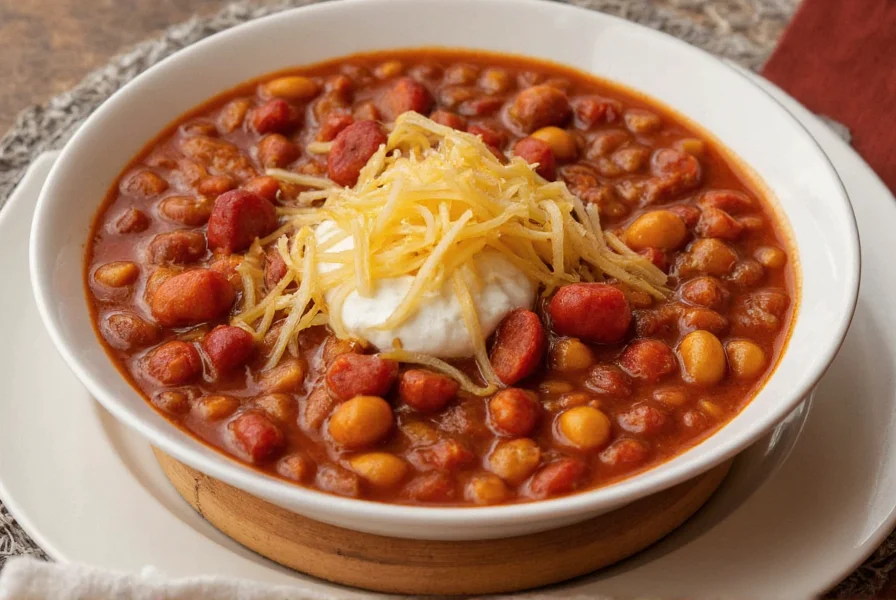When exploring regional American chili variations, Wheatland chili stands as a beloved Wyoming specialty with deep community significance. This distinctive preparation method emerged from Wheatland's agricultural heritage and continues to be celebrated through local events and family recipes passed down through generations.
The Origins of Wheatland Chili
Wheatland, Wyoming, established in the early 1900s as an agricultural community, developed its signature chili style as settlers combined culinary traditions from various regions. The town's location in Platte County, surrounded by cattle ranches and bean farms, naturally influenced the ingredients that became staples in Wheatland chili.
Unlike the bean-free Texas chili or the cinnamon-infused Cincinnati chili, Wheatland chili represents a hearty, practical meal that sustained farm workers through Wyoming's harsh winters. The first documented Wheatland chili recipe appeared in the Platte County Herald in 1937, featuring ground beef, kidney beans, tomatoes, and a modest spice profile that avoided excessive heat to appeal to all family members.
Defining Characteristics of Authentic Wheatland Chili
Several elements distinguish genuine Wheatland chili from other regional variations:
| Feature | Wheatland Chili | Texas Chili | Cincinnati Chili |
|---|---|---|---|
| Beans | Always included (kidney beans) | Never included | Served over spaghetti with beans on side |
| Meat | Ground beef preferred | Cubed beef only | Ground beef |
| Sauce Base | Tomato-based with moderate spices | Chili pepper puree only | Sweet, spiced with cinnamon and cocoa |
| Consistency | Thick, hearty texture | Brothy, soup-like | Thin, pourable |
Traditional Wheatland chili preparation begins with browning ground beef, followed by adding soaked kidney beans, crushed tomatoes, onions, garlic, and a balanced spice mixture. The "Holy Trinity" of Wheatland chili spices includes cumin, paprika, and a touch of cayenne pepper—never overwhelming the palate. Many family recipes incorporate a small amount of unsweetened cocoa powder to deepen the flavor without adding sweetness.

Wheatland Chili Festival and Community Traditions
Since 1978, the annual Wheatland Chili Cook-Off has drawn visitors from across Wyoming and neighboring states. Held every September in Wheatland's Memorial Park, this community event features dozens of competing chili recipes while maintaining the essential characteristics of authentic Wheatland style.
The festival's judging criteria emphasize adherence to traditional preparation methods while allowing for personal touches. Categories include "Most Authentic," "Best Creative Variation," and "People's Choice," with the "Most Authentic" award requiring strict compliance with the traditional recipe framework that defines Wheatland chili.
How to Prepare Wheatland-Style Chili at Home
Creating authentic Wheatland chili requires attention to ingredient proportions and cooking technique. The traditional ratio follows:
- 2 pounds ground beef (80% lean)
- 2 cups cooked kidney beans
- 1 can (28 oz) crushed tomatoes
- 1 large onion, finely diced
- 3 cloves garlic, minced
- 2 tablespoons chili powder
- 1 tablespoon ground cumin
- 1 teaspoon paprika
- 1/2 teaspoon cayenne pepper (optional)
- 1 tablespoon unsweetened cocoa powder
- Salt and black pepper to taste
Begin by browning the ground beef with onions and garlic, then drain excess fat. Add all remaining ingredients and simmer uncovered for 90 minutes, stirring occasionally. The extended simmering time allows flavors to meld while maintaining the characteristic thick consistency. Authentic Wheatland chili should coat the back of a spoon without being paste-like.

Preserving the Wheatland Chili Tradition
As regional food traditions face homogenization in modern culinary culture, Wheatland residents actively preserve their distinctive chili style through community education and documentation. The Platte County Historical Society maintains an archive of family chili recipes dating back to the 1930s, while local schools incorporate chili-making into home economics curriculum.
Food historians note that Wheatland chili represents an important example of how American regional cuisines developed through practical adaptation to local resources. The inclusion of beans reflects both agricultural availability and nutritional considerations, creating a complete protein source that sustained farm communities through demanding work seasons.
Frequently Asked Questions
What makes Wheatland chili different from other regional chili styles?
Wheatland chili uniquely combines ground beef with kidney beans in a tomato-based sauce with moderate spices. Unlike Texas chili which never includes beans, Wheatland chili always features beans as a core ingredient. It also differs from Cincinnati chili which has sweet spices and is served over spaghetti. The distinctive thick consistency and balanced spice profile define authentic Wheatland style.
Is Wheatland chili supposed to be very spicy?
No, authentic Wheatland chili emphasizes flavor balance over heat. Traditional recipes use moderate spices with cumin and paprika as primary seasonings, with cayenne pepper added only optionally and in small amounts. The goal is a rich, complex flavor that appeals to all ages, reflecting its origins as family meal in Wyoming's agricultural communities.
Can I use chuck roast instead of ground beef for Wheatland chili?
While traditional Wheatland chili uses ground beef for practicality and texture, some modern variations use cubed chuck roast. However, authentic preparation specifies ground beef as it creates the characteristic thick consistency and allows the beans to remain distinct. If using chuck roast, the cooking method would align more with Texas chili than traditional Wheatland style.
Where can I experience authentic Wheatland chili?
The best place to experience authentic Wheatland chili is in Wheatland, Wyoming, particularly during the annual Wheatland Chili Cook-Off held each September. Several local restaurants in Platte County, including the historic Wheatland Diner and Buckaroo's Cafe, serve traditional Wheatland-style chili year-round using recipes passed down through generations.
Why does Wheatland chili always include beans when other styles don't?
The inclusion of beans in Wheatland chili reflects both agricultural practicality and nutritional considerations. Wheatland's location in bean-growing country made kidney beans readily available, while the combination of beans and beef created a complete protein source that sustained farm workers through demanding seasons. This practical adaptation distinguishes Wheatland chili from Texas-style which developed in cattle country where beans were less central to the agricultural economy.











 浙公网安备
33010002000092号
浙公网安备
33010002000092号 浙B2-20120091-4
浙B2-20120091-4